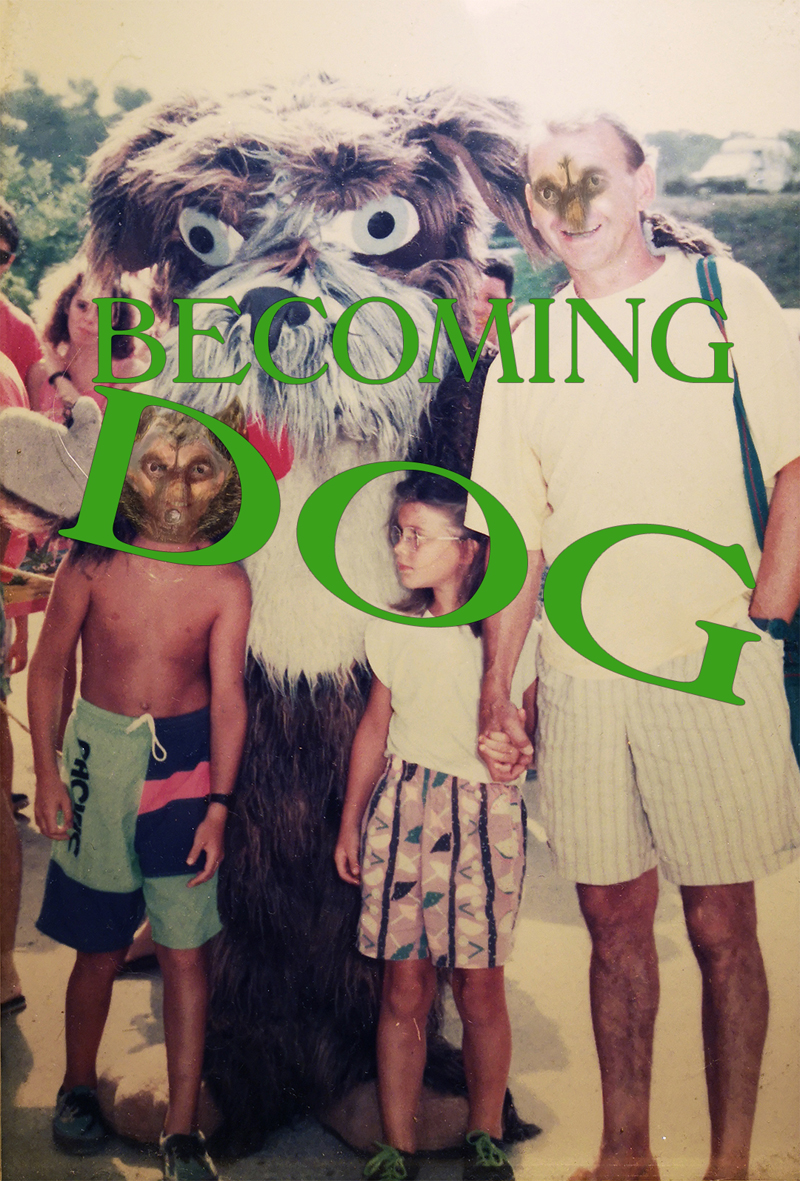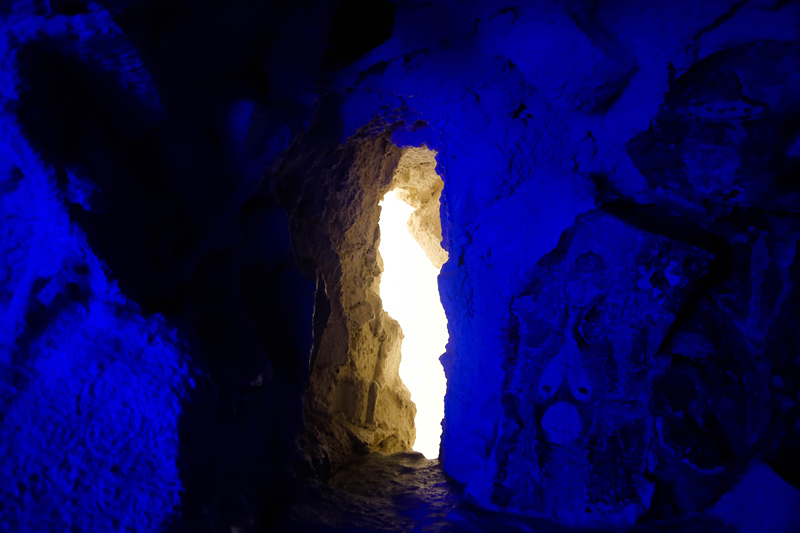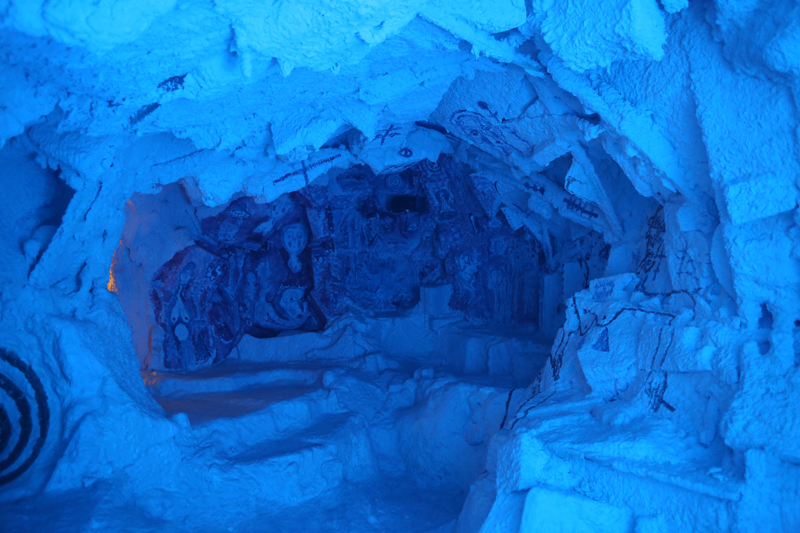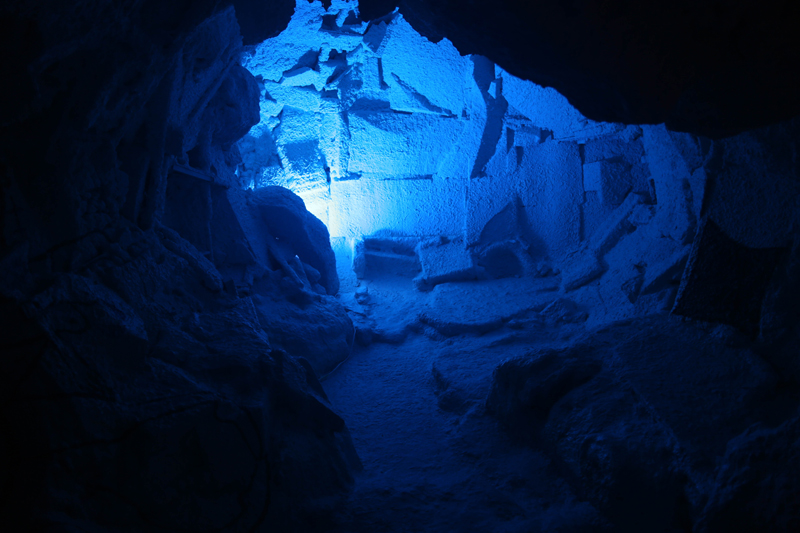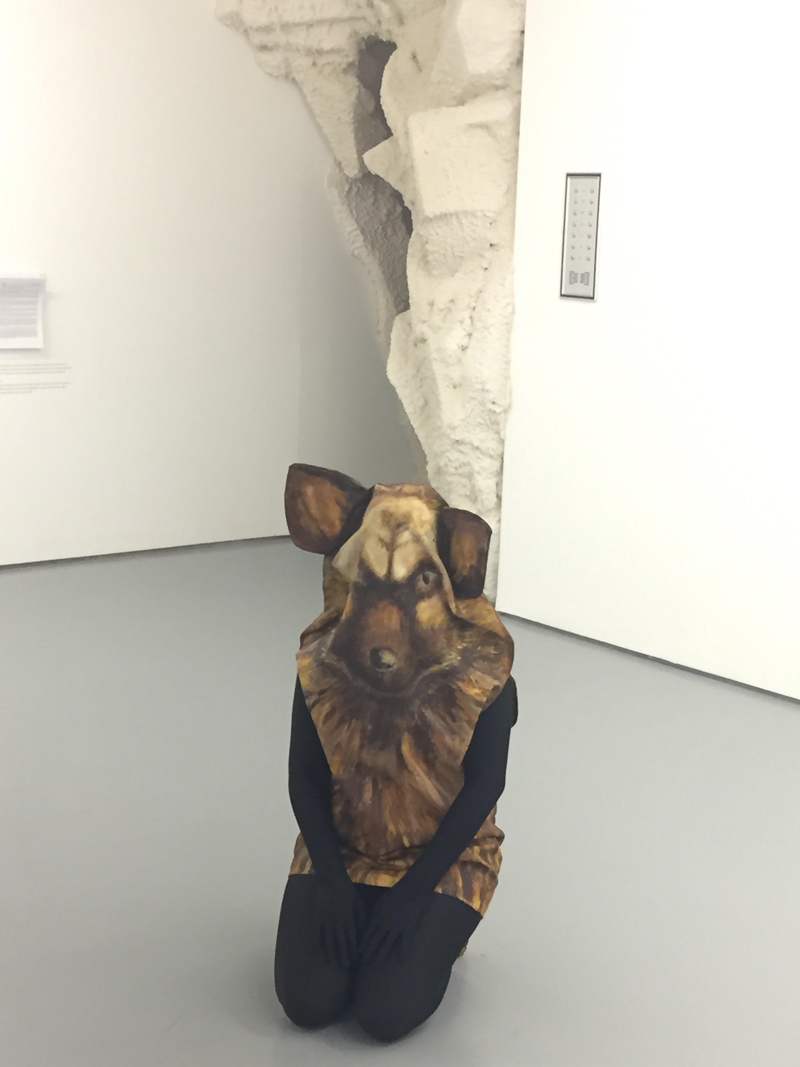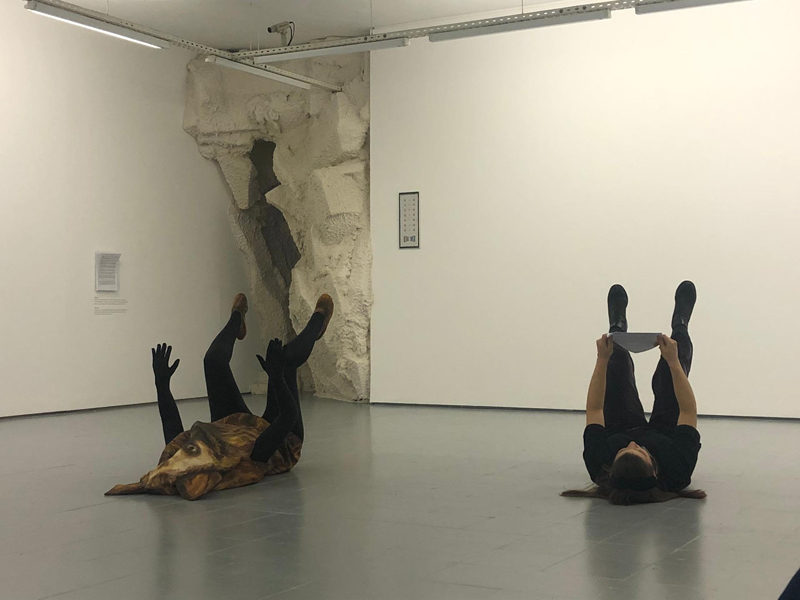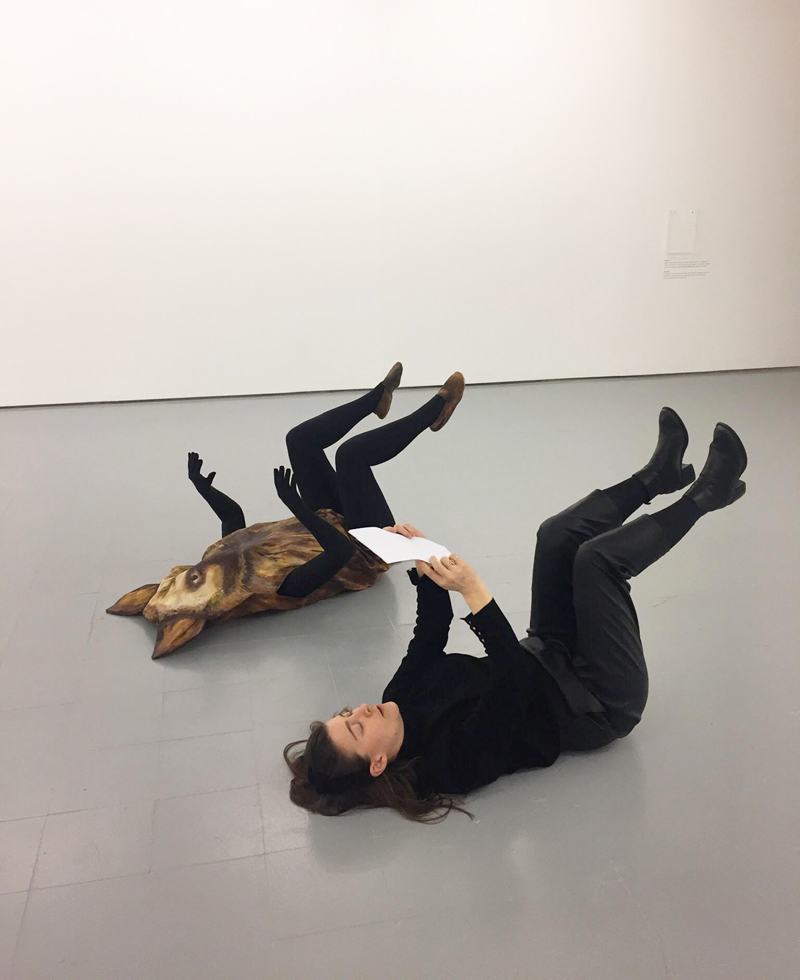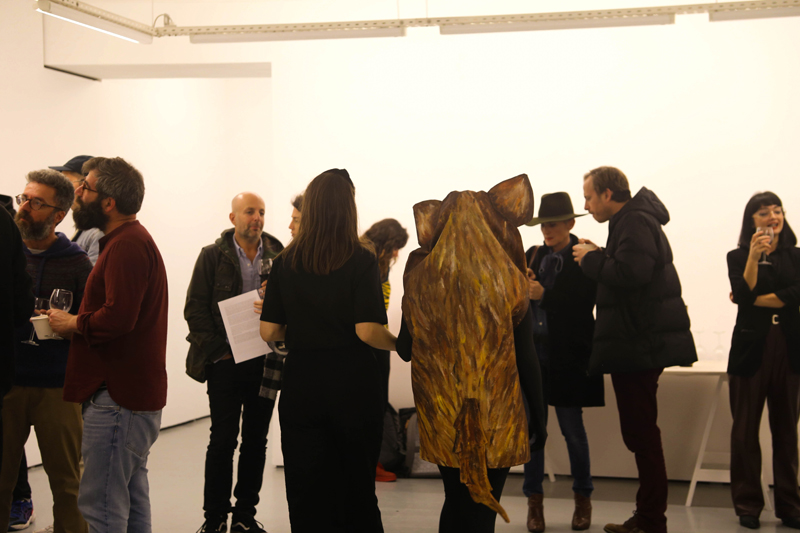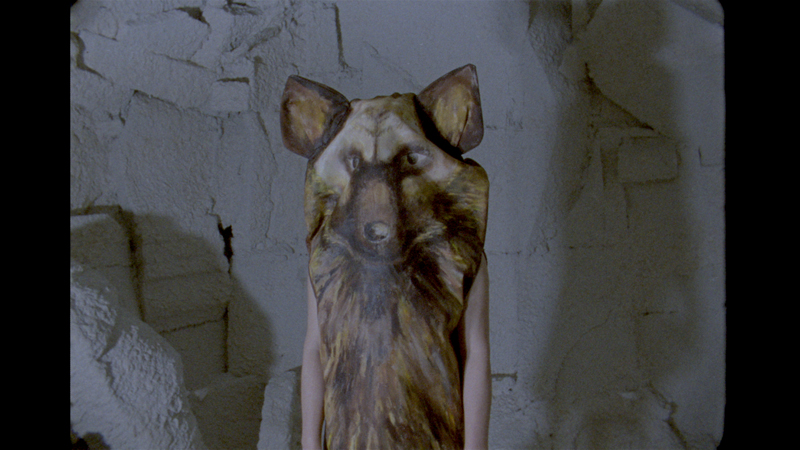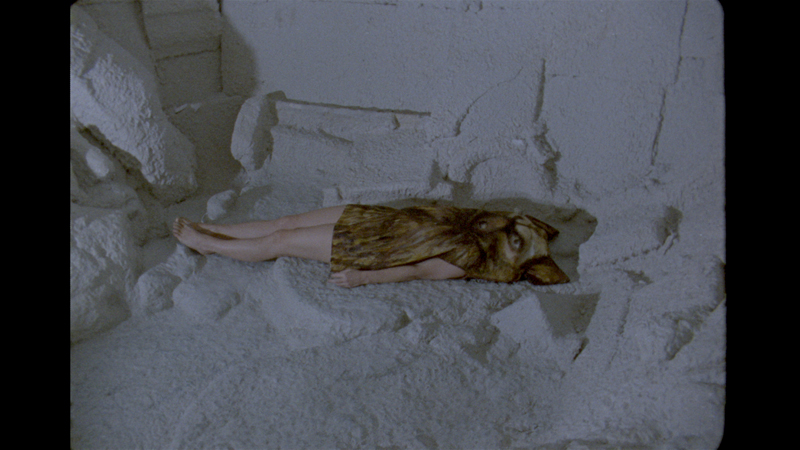BECOMING DOG
The Grotto, Lisbon, February 2020
Elise Lammer, Julie Monot
The performance BECOMING DOG, by Elise Lammer, Julie Monot, and Lucien Monot, is the genesis of a larger work, Theodora or The Progress, a multi-chapter project organized by Alpina Huus between 2020 and
2021.
(...)
As a dark place, The Grotto tries to experiment and create an arch in tension occurring from something between cave paintings and the present. It’s an artificial cavern between the Merzbau (Kurt Schwitters) and a cave from the romantic
period. Its quality, dwelling from natural to artificial, fixes the dark cloud of the Anthropocene. It places both the artist and the visitor to work or to see under the toxic impressions left by humans on our planet. Its non-rationality (or
nonarchitecture) enhances the will of art to trigger in us new forms of empathy; among humans, between humans and animals, and between humans and natural elements.
A growing disbelief towards the way the rational has oppressed new ways of thinking, feeling and formulating hypotheses to learn to live better in a future outside the imposed grid–economically, politically and technologically–is pushing
arts through ways that allow us to transcend the body (beyond language) and to expand consciousness.
Circularly (or spirally, because movement is infinite?), the expansion of consciousness–something that is wider than the rational–is at the origin of the first images marked on the walls of a cave. In these, some animals were adorned with
human eyes, ears or mouths. There are representations of sexual relationships between humans and animals; the oldest being Foz Côa, that allow us to wonder and to imagine a real horizontality between humans and animals, at a time when
neither agriculture nor language existed.
Therefore BECOMING DOG can be seen as a pivotal moment for The Grotto. The shift requested by this performance involves a radical change of perspective. Similar to the change made in Parisian society with the construction of the
Eiffel Tower, which allowed citizens to see their city from a different perspective, BECOMING DOG invites the viewer to see the world from a dog’s perspective. We loose the vertical gaze, and abandon the ability to express ourselves
through verbal language. Words exist and are a constant, but they may be insufficient for the purposes of a society that wants to see beyond the horrible daily fixity that territorializes the future and that does not allow us to fully live our
present.
Along with the belief that a dog's perspective can offer us something, BECOMING DOG makes us believe that art has the power to create new epistemological systems, new ways of feeling and potential individuation.
Dogs are animals that have accompanied us throughout history, without deserving the place of importance that others, such as the lion or the bear, have had in the artistic representation that humans have made over time. But dogs have always
established a bridge between the visible and the invisible, the conscious and the unconscious, death and life. Perhaps, dogs know something that cannot be communicated through verbal language, because they don’t speak. Recently the
philosopher Mark Alizart and before him Franz Kafka placed the figure of the dog as a thinker–one that is able to know the true secret of humanity. In his essay, Alizart questions the normalized perspective of the submissive dog to elevate
her to a level of a spiritual superiority, capable of using her gentle power to reach a dominant role.
The performance BECOMING DOG tells us that perhaps we could try to reach the spiritual level of the dog in order to reach harmony between all beings and elements, without any division or hierarchy, reestablishing a new balance, in us
and the world; one that would cancel, perhaps without any difference between in and out, interior and exterior, matter and spirituality, through a body without organs and toward a world without disease.
Hugo Canoilas, January 2020
